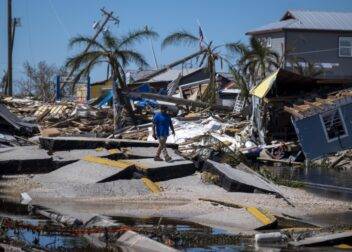Report Indicates Robust Growth in the US Cyber Insurance Market
According to a recent report from rating agency AM Best, the U.S. cyber insurance market witnessed robust expansion in 2022, as direct premiums surged by 50% to reach a total of $7.2 billion.
The report, named “US Cyber: First Hard Market Cycle Brings a Return to Profitability,” emphasizes the notable enhancement in loss ratios attributed to enhanced underwriting discipline.
In the past three years, the cyber insurance market has witnessed a significant surge in direct premiums written (DPW), tripling its size. This growth has been fueled by robust demand that surpasses the overall commercial lines industry. In 2022, insurers experienced a remarkable upturn in their calendar-year results, marking a positive shift after two challenging years. This positive trend can be attributed to sustained rate increases, stricter underwriting practices, and a decline in ransomware attacks. When compared to 2021, the loss ratio for standalone policies decreased by 23 percentage points to 43%, while for packaged policies, it dropped by 18 percentage points to 48%.
Christopher Graham, a senior industry analyst at AM Best, stated that underwriters have employed a comprehensive range of strategies to effectively manage exposures in the cyber insurance market. Alongside rate increases, underwriters have implemented measures such as reducing limits, enhancing insureds’ own retention, and refining risk selection practices to ensure better risk management. These proactive approaches have contributed to the overall stability and profitability of the market.
According to Graham, the expanding and increasingly complex cyber landscape, including the emergence of new exposures related to artificial intelligence and the resurgence of ransomware attacks in 2023, is anticipated to drive a surge in demand for cyber coverage. As organizations grapple with evolving cyber risks, there is a growing recognition of the importance of comprehensive insurance solutions to mitigate potential damages and protect against financial losses.
Shift in the market
According to the report, there has been a notable shift in the cyber insurance market towards standalone policies, with larger insureds increasingly favoring this option over packaged policies. Standalone policies now account for over 70% of cyber premiums, surpassing the total cyber insurance premium written in 2021. AM Best views this shift positively, as it has the potential to reduce disputes and litigation costs. By opting for standalone policies, insureds can obtain more tailored coverage that specifically addresses their unique cyber risks, thereby promoting greater clarity and potentially minimizing disagreements over policy interpretation.
A significant shift in the cyber insurance market is the increased prominence of surplus lines writers, who now hold a majority share of the cyber insurance premium. While they maintained a consistent 25% market share from 2015 to 2020, their presence has grown exponentially since then, experiencing a remarkable increase of over 500%. Currently, surplus lines writers account for nearly 60% of the total cyber market premium. This shift indicates a changing landscape as insureds seek coverage from alternative sources outside the traditional insurance market, possibly driven by the need for specialized and customized cyber insurance solutions.
While there was a decrease in ransomware claims during 2022, first-party claims continue to account for approximately 75% of reported claims, indicating their ongoing prevalence. Notably, there has been an uptick in business email compromise claims. Third-party liability claims also retain their significance within the cyber insurance landscape. It is worth noting that the approach to war risk exclusions varies among insurance companies, with some maintaining traditional exclusions related to war while others are willing to cover certain war exposures. This variance reflects the diverse strategies adopted by insurers to address potential risks associated with cyber warfare and geopolitical factors.
According to Fred Eslami, associate director at AM Best, systemic risk remains a persistent concern in the cyber insurance industry. While traditional property catastrophes tend to have a limited geographical impact, cyber catastrophes like the NotPetya incident can have a global reach.
Eslami highlights the expanding definition of war and its potential implications for exclusions, which may result in reduced coverage for insureds. Ultimately, the extent of coverage offered to insureds is influenced by insurers’ risk appetite and the willingness of reinsurers to provide coverage.



